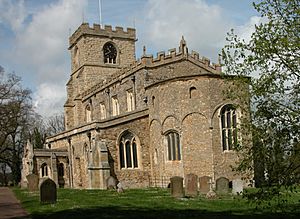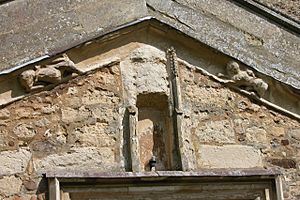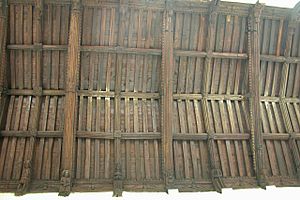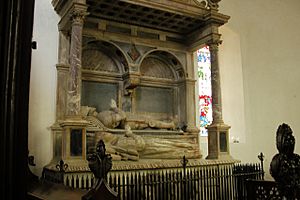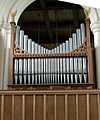All Saints' Church, Wing facts for kids
All Saints' Church in Wing, Buckinghamshire, is a very old and important church. It's known as a Grade I listed building, which means it's super special and protected. Most of its stone walls were built between the 8th and 11th centuries, during the Anglo-Saxon period. This makes it one of the oldest churches still standing in England today!
Wing is a village located about 5 kilometers (3 miles) southwest of Leighton Buzzard and 12 kilometers (7.5 miles) northeast of Aylesbury. The church itself is found on the western edge of the village. Fun fact: a music video for the choir Libera was filmed here!
Contents
Discovering All Saints' Church History
The story of Wing goes way back to the 7th or 8th century. The name "Wing" originally meant "The Settlement of Withun's People." Christian missionaries first arrived in this area in the late 600s, spreading Christianity from Aylesbury. The church in Wing was first mentioned in writing shortly after the Norman Conquest in 1066. This record talked about a priest named Goldric, who was allowed to keep his church and land even after the Normans took over England.
The Ancient Anglo-Saxon Era
Some parts of All Saints' Church are incredibly old, dating back to Anglo-Saxon times. These include the round end part of the church called the apse and the secret room underneath it, known as the crypt. The north wall and some pillars inside the church are also Anglo-Saxon.
The crypt and the apse above it were built at different times. The oldest parts of the crypt, like three small spaces and windows, are from the 8th century. The apse above it was built in the 9th century and is a fantastic example of architecture from that time. It's the only fully preserved Anglo-Saxon apse in all of England!
The main part of the church, which is 10.6 meters (35 feet) high and has three sections (naves), also dates from the Anglo-Saxon period. The only Anglo-Saxon window still visible is high up on the eastern wall, above where the choir sits.
From Norman Times to the Reformation
After the Normans conquered England in 1066, the church was given to a monastery in France. Later, in 1216, the church's money was used to pay for a vicar, and it officially became a "parish church" for the local community.
In 1416, because of the Hundred Years War between England and France, the church's ownership changed again. It then belonged to a priory (a type of monastery) near St Albans. From the mid-1200s to the late 1400s, the local Lord of Wing and Ascott was responsible for taking care of the church.
The church had some big changes in the 14th and 15th centuries. One of the most noticeable additions in the 15th century was the huge bell tower. It's so tall you can see it from far away! Inside the tower are six bells. Four of these bells are very old, made between 1638 and 1654 by the "Knight family's bell foundry." The wooden frame holding the bells was also built in 1654.
The church also has beautiful stained glass windows from the 14th century, including one showing the coronation of Mary. The two entrance buildings on the south and north sides, with their decorated doorways, are from the 14th and 15th centuries. The southern doorway has carvings of coats of arms, lions, and other symbols. The baptismal font, where babies are baptized, is also from the 15th century and is still used today.
One of the most impressive artworks from the 15th century is the wooden ceiling in the main part of the church. It has amazing carvings of angels with outstretched wings. The edges of the ceiling are decorated with many different figures, like kings, queens, musicians, and even devils!
The Church After the Reformation
The Reformation in England started around 1530 when Henry VIII separated the English Church from the Pope. This was a big change for Wing because the priory that owned the church was closed down. The rights to the church were then bought by Robert Dormer, 1st Baron Dormer.
The Dormer family lived nearby at Ascott Hall and became very important in Wing until the early 1700s. Many members of the Dormer family are buried in the church, especially at the eastern end of the northern aisle. You can see impressive tombs for Sir Robert Dormer (who died in 1552), Sir William Dormer (who died in 1575), and Robert Dormer, 1st Baron Dormer (who died in 1616).
The church also has several beautiful stained glass windows from the 1800s. There's also a Walker organ, which is a type of musical instrument, from 1864. It was moved to a new spot in the base of the tower in 2002.
Images for kids
See also
 In Spanish: Iglesia de Todos los Santos (Wing) para niños
In Spanish: Iglesia de Todos los Santos (Wing) para niños


